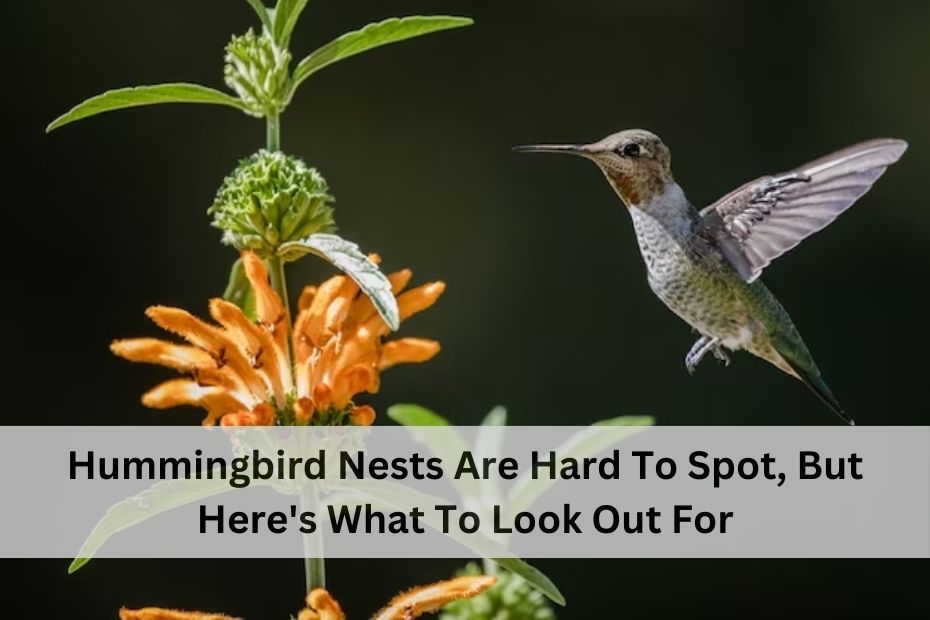Hummingbirds are some of the most fascinating creatures in the bird world, known for their dazzling colors, rapid wing beats, and incredible ability to hover in midair. However, there’s one aspect of their lives that remains somewhat mysterious: their nests. These tiny nests are not only hard to spot due to their size but also because of their careful construction, designed to blend seamlessly into the environment. If you’re lucky enough to catch a glimpse of a hummingbird nest, you’re witnessing one of nature’s small miracles.
In this article, we will dive into the unique characteristics of hummingbird nests, how to identify one, and the importance of respecting these small but crucial habitats. Additionally, we’ll answer some frequently asked questions to provide a complete understanding of these marvelous little homes.
What Makes Hummingbird Nests So Special?
Hummingbird nests are true marvels of avian engineering. The birds use a variety of materials to create these intricate homes, which are both functional and nearly invisible in the wild.
- Tiny Size: Most hummingbird nests are no larger than a golf ball, and some can be as small as a walnut. Their compact size makes them extremely difficult to find in the wild.
- Camouflage: Hummingbirds are experts in making their nests blend in with their surroundings. They use moss, lichen, and plant fibers to create a nest that looks almost identical to the branches and leaves around it.
- Elastic Structure: Hummingbirds use spider silk as one of the main binding materials in their nests. This allows the nest to stretch as the baby hummingbirds grow, ensuring they stay snug and secure as they develop.
- High Location: Most hummingbird nests are built high in trees or on the outer branches of bushes. They prefer locations that are not easily accessible to predators and are often shielded by foliage, making them even harder to spot.
- Shape and Structure: The nest is usually cup-shaped with soft inner lining materials like plant down, making it a cozy and protective space for the eggs and, later, the chicks.
How to Spot a Hummingbird Nest
Given the factors mentioned above, it’s no surprise that spotting a hummingbird nest requires patience and a sharp eye. Here are some things to look for if you’re hoping to find one:
1. Hummingbird Behavior
The first step to locating a hummingbird nest is observing the birds themselves. Hummingbirds are creatures of habit, and once they’ve chosen a nesting spot, they will frequently return to it. Watch for a female hummingbird repeatedly flying to a specific area; this could indicate the presence of a nest.
2. Preferred Trees and Plants
Hummingbirds tend to build their nests on deciduous trees like oak, maple, and birch. They often select the forked branches of these trees, usually near the edges where there is plenty of sunlight and some protection from predators. You might also find nests in dense shrubs or small bushes.
3. Height
Most hummingbird nests are built at least 10 to 20 feet above the ground. While this height helps protect the nest from potential threats, it also makes it harder for humans to spot. You may need binoculars to see one clearly.
4. Spider Silk Webbing
One unique clue is the presence of spider silk. Hummingbirds use it to bind their nests together, and you might see strands of silk attached to tree branches or plants. While the silk can be hard to spot, it can be a vital hint that a hummingbird nest is nearby.
5. Moss, Lichen, and Plant Fibers
Look for small clumps of moss or lichen on branches. While these could be natural elements in the tree, if they’re combined with other fine materials like plant fibers or down, there’s a chance a hummingbird nest is hiding in plain sight.
The Life Inside a Hummingbird Nest
Once a hummingbird nest is constructed, the female lays one or two eggs, each about the size of a pea. These eggs will incubate for about two weeks before hatching. During this period, the mother diligently tends to the nest, sitting on the eggs and keeping them warm.
After hatching, the chicks are blind and featherless, relying completely on their mother for warmth and food. The mother bird will leave the nest only to gather nectar and small insects to feed her babies. Over the next few weeks, the chicks grow rapidly, and by the time they are 3 weeks old, they are usually ready to leave the nest.
Why It’s Important to Leave Hummingbird Nests Undisturbed
If you are fortunate enough to find a hummingbird nest, it’s crucial to respect the bird’s space. Hummingbirds are very sensitive to disturbance, and any stress can cause the mother to abandon the nest. If the nest is abandoned, the chicks will not survive. Here are a few tips for ensuring the safety of a hummingbird nest:
- Keep Your Distance: Always observe from a safe distance. Binoculars are a great tool for getting a closer look without disturbing the birds.
- No Flash Photography: Avoid using bright flashes or loud noises that could startle the birds.
- Avoid Touching: Never touch the nest or the surrounding branches. Even the smallest change can cause the mother bird to flee.
- Control Pets: If the nest is in your yard, make sure to keep pets away from the area to prevent any accidental damage.
- Don’t Feed the Birds Near the Nest: While it might seem like a good idea, providing extra food near the nest can attract other animals and predators that could harm the hummingbirds.
Conclusion
Spotting a hummingbird nest is a rare and beautiful experience. These tiny, well-hidden homes are a testament to the bird’s incredible skills in both architecture and survival. With their camouflaged designs, use of natural materials like spider silk, and strategic high-up locations, hummingbird nests are marvels that often go unnoticed.
